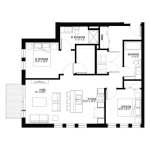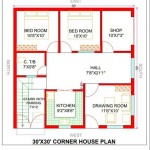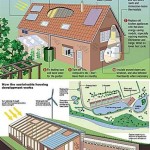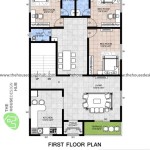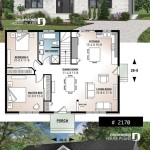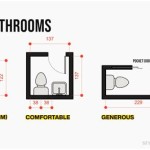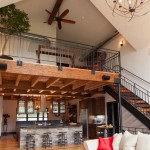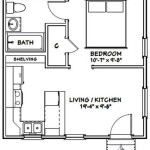How To Make A 3D Planet Out Of Cardboard
Creating a three-dimensional planet replica using cardboard offers an engaging and hands-on learning experience. This project combines artistic expression with basic geometry and geography, making it suitable for educational settings or personal enrichment. The following guidelines detail the process of constructing a cardboard planet model, from material selection to final embellishment.
The initial stage involves gathering the necessary materials. The primary component is cardboard, ideally in varying thicknesses. Corrugated cardboard is suitable for the core structure, while thinner card stock can be used for surface details. Other essential materials include scissors or a craft knife, a cutting mat, a hot glue gun and glue sticks, acrylic paints in various colors, paintbrushes, a pencil, a ruler or measuring tape, and a compass or circular object for tracing the planet's basic shape. Optional materials may include texture paste, modeling clay, and varnish for added detail and protection.
Before initiating construction, it is crucial to plan the planet's size and overall design. Consider the desired scale of the model and the level of detail to be incorporated. Researching images of the target planet is recommended to accurately represent its surface features, colors, and unique characteristics. A preliminary sketch can serve as a visual guide throughout the construction process.
Creating the Spherical Core
The foundation of the 3D planet is a sturdy spherical core. Several methods can be employed to achieve this, each with its own advantages and disadvantages. One approach involves cutting multiple cardboard circles of increasing diameter and stacking them to form a rough sphere. Alternatively, a geodesic dome structure can be constructed using triangular cardboard pieces that are then glued together. A third option utilizes a pre-made sphere, such as a foam ball or a balloon covered in papier-mâché, which is then reinforced with a cardboard layer.
If using the stacked circle method, begin by determining the desired diameter of the planet. Cut out a series of cardboard circles, starting with a small circle for the topmost layer and progressively increasing the diameter for each subsequent layer. The diameter should gradually decrease again as the layers approach the base of the sphere. Hot glue each circle to the one below it, carefully aligning the centers to maintain a consistent spherical shape. The resulting structure will resemble a stepped pyramid, which can then be smoothed out in later stages.
For the geodesic dome method, employ a template or online calculator to determine the dimensions of the triangular cardboard pieces required to form a sphere of the desired size. Cut out a sufficient number of identical triangles, ensuring precise measurements for consistent results. Begin assembling the triangles by hot gluing them together, following a geodesic dome pattern. The resulting structure will be relatively lightweight and strong. Gaps between the triangles can be filled with smaller cardboard pieces or modeling clay.
If starting with a pre-made sphere, lightly coat it with glue and wrap it in strips of cardboard. This creates a reinforced base for further embellishment. The cardboard strips should overlap to provide maximum strength and coverage. Allow the glue to dry completely before proceeding.
Regardless of the chosen method, the core structure will likely require further refinement to achieve a smooth, spherical surface. This can be accomplished by applying layers of paste, modeling clay, or overlapping pieces of thinner cardboard. Sanding the surface after each layer is applied will help to eliminate imperfections and create a uniform texture.
Adding Surface Texture and Detail
Once the core structure is complete, the next step involves adding surface texture and detail to represent the planet's geographical features. This is where artistic interpretation and creativity come into play. Employing different techniques and materials can create a variety of textures and visual effects.
One common technique involves using texture paste to create raised areas representing mountains, valleys, and other topographical features. Apply the paste in layers, allowing each layer to dry before applying the next. Varying the thickness and application technique can produce different textures. For example, dabbing the paste with a sponge creates a rough, rocky surface, while smoothing it with a palette knife results in a smoother, more undulating terrain.
Small pieces of cardboard, shaped and glued onto the surface, can also be used to add texture and detail. These can represent tectonic plates, lava flows, or other geological formations. Experiment with different shapes, sizes, and orientations to achieve the desired effect. Thin card stock can be easily molded and shaped to create intricate details.
Modeling clay is another versatile material for adding surface detail. It can be sculpted into various shapes and textures, and it can be easily painted once dry. The clay can be used to create craters, canyons, or other distinctive features. Pressing objects into the clay while it is still wet can create interesting textures and patterns.
Consider the specific characteristics of the target planet when adding surface details. Research geological maps and satellite images to accurately represent its unique features. Pay attention to the distribution of landmasses, oceans, and ice caps. Remember to maintain a consistent scale and perspective throughout the detailing process.
Painting and Finishing
The final stage involves painting and finishing the planet model. This is where the planet's colors and overall aesthetic appearance are brought to life. Acrylic paints are recommended due to their vibrant colors, durability, and ease of use. A variety of painting techniques can be employed to achieve different effects.
Begin by applying a base coat of paint to the entire planet surface. This will provide a uniform background for subsequent layers of paint. Choose a color that is representative of the planet's overall hue. For example, a blue base coat is suitable for Earth, while a reddish-brown base coat is appropriate for Mars.
Once the base coat is dry, begin adding details and variations in color. Use a variety of paintbrushes, sponges, and other tools to create different textures and effects. Dry brushing, a technique in which a small amount of paint is applied to a dry brush and then lightly brushed across the surface, can create a textured, weathered look. Stippling, a technique in which the paint is applied in small dots, can create a speckled or granular effect.
Layering different colors and blending them together can create a more realistic and nuanced appearance. Use a palette knife or sponge to blend the colors smoothly. Pay attention to the subtle variations in color that exist on the planet's surface. For example, oceans may range in color from deep blue to turquoise, depending on depth and location.
Highlighting and shading can add depth and dimension to the planet model. Use lighter shades of paint to highlight raised areas and darker shades to create shadows in recessed areas. This will create the illusion of three-dimensionality and make the planet appear more realistic.
Once the paint is dry, a final coat of varnish can be applied to protect the surface and enhance the colors. Choose a varnish with a matte or gloss finish, depending on the desired aesthetic. The varnish will also make the planet model more durable and resistant to scratches and fading.
Additional embellishments can be added at this stage, such as small flags or labels to identify specific features. The planet model can also be mounted on a stand or displayed in a case to protect it from damage.
Creating a 3D planet out of cardboard is a multifaceted project that combines craftsmanship, artistry, and scientific understanding. The final product serves as a tangible representation of a distant world, offering a unique educational and aesthetic experience.

3d Solar System School Project How To Make A With Cardboard Science Projects

How To Make Paper Mache Planets 3d Solar System Crafts For Kids

How To Build A 3d Solar System Model With Kids Thoughtfully Sustainable

Diy 3d Solar System Mobile With Cardboard

Solar System Model Making Project Using Cardboard Diy Geography Science Howtofunda

How To Make A Solar System Model

How To Make A 3d Solar System Model For Kids Planets School Project Time 4 Tv

How To Build A 3d Solar System Model With Kids Thoughtfully Sustainable

How To Make 3d Solar System Project For Kids With Pictures Instructables

How To Make A Diy 3d Solar System Model Mombrite
Related Posts

